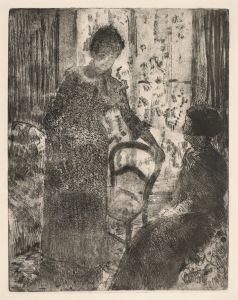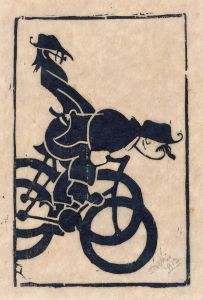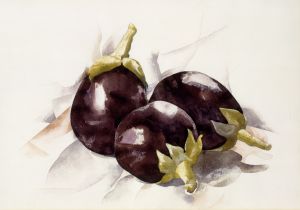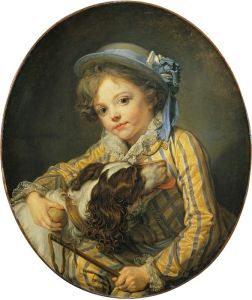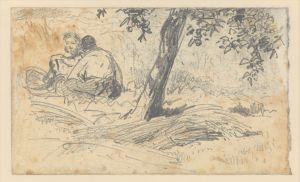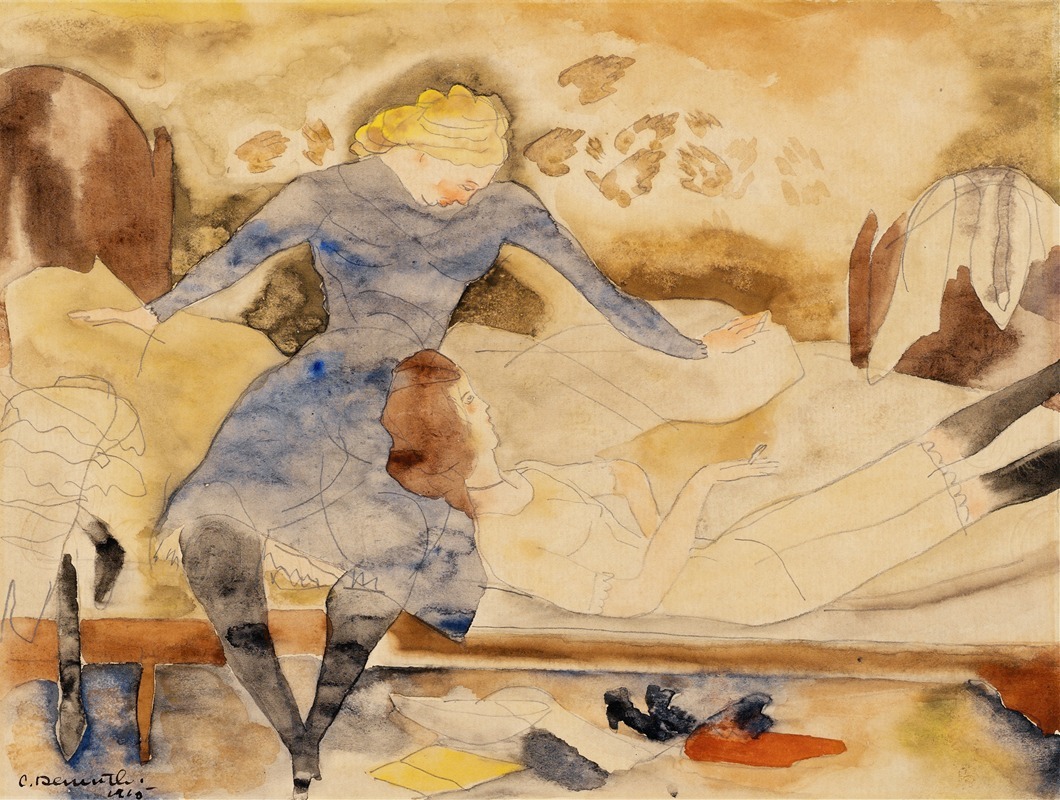
Nana Visiting her Friend Satin
A hand-painted replica of Charles Demuth’s masterpiece Nana Visiting her Friend Satin, meticulously crafted by professional artists to capture the true essence of the original. Each piece is created with museum-quality canvas and rare mineral pigments, carefully painted by experienced artists with delicate brushstrokes and rich, layered colors to perfectly recreate the texture of the original artwork. Unlike machine-printed reproductions, this hand-painted version brings the painting to life, infused with the artist’s emotions and skill in every stroke. Whether for personal collection or home decoration, it instantly elevates the artistic atmosphere of any space.
Charles Demuth was an American modernist painter known for his contributions to the Precisionism movement, which emphasized clean lines and geometric forms. One of his lesser-known works is "Nana Visiting her Friend Satin." Unfortunately, there is limited information available specifically about this painting, as it is not one of Demuth's most widely studied or exhibited works.
Charles Demuth was born on November 8, 1883, in Lancaster, Pennsylvania. He studied at the Pennsylvania Academy of the Fine Arts and later at the Académie Colarossi in Paris, where he was influenced by the avant-garde art movements of the time. Demuth is best known for his watercolors and oil paintings that often depict industrial landscapes, urban scenes, and still lifes with a focus on sharp lines and clear forms.
"Nana Visiting her Friend Satin" is not as frequently discussed as some of Demuth's other works, such as "I Saw the Figure 5 in Gold" or his series of industrial landscapes. However, like many of his paintings, it likely reflects his interest in modern life and the interplay between people and their environments. Demuth often drew inspiration from his personal life and the people he knew, and his works frequently include references to his own experiences and relationships.
Demuth's style is characterized by a blend of realism and abstraction, and he often used a technique that involved layering transparent washes of watercolor to create depth and luminosity. This approach allowed him to capture the subtleties of light and shadow, giving his works a distinctive clarity and vibrancy.
Throughout his career, Demuth was associated with a group of artists known as the Stieglitz Circle, named after the photographer and art promoter Alfred Stieglitz. This group was instrumental in promoting modern art in America during the early 20th century. Demuth's work was exhibited alongside other prominent artists of the time, including Georgia O'Keeffe and John Marin.
Despite his relatively short life—Demuth died in 1935 at the age of 51—he left a significant impact on American art. His work is held in major collections across the United States, including the Metropolitan Museum of Art, the Whitney Museum of American Art, and the Philadelphia Museum of Art.
While specific details about "Nana Visiting her Friend Satin" are scarce, it is important to view it within the broader context of Demuth's oeuvre and the Precisionist movement. His paintings often explore themes of modernity, industrialization, and the changing American landscape, reflecting the cultural and social shifts of his time.
In summary, while detailed information about "Nana Visiting her Friend Satin" is not readily available, Charles Demuth's broader body of work provides insight into his artistic style and thematic interests. His contributions to American modernism and the Precisionist movement remain influential, and his works continue to be celebrated for their innovative approach to form and composition.





